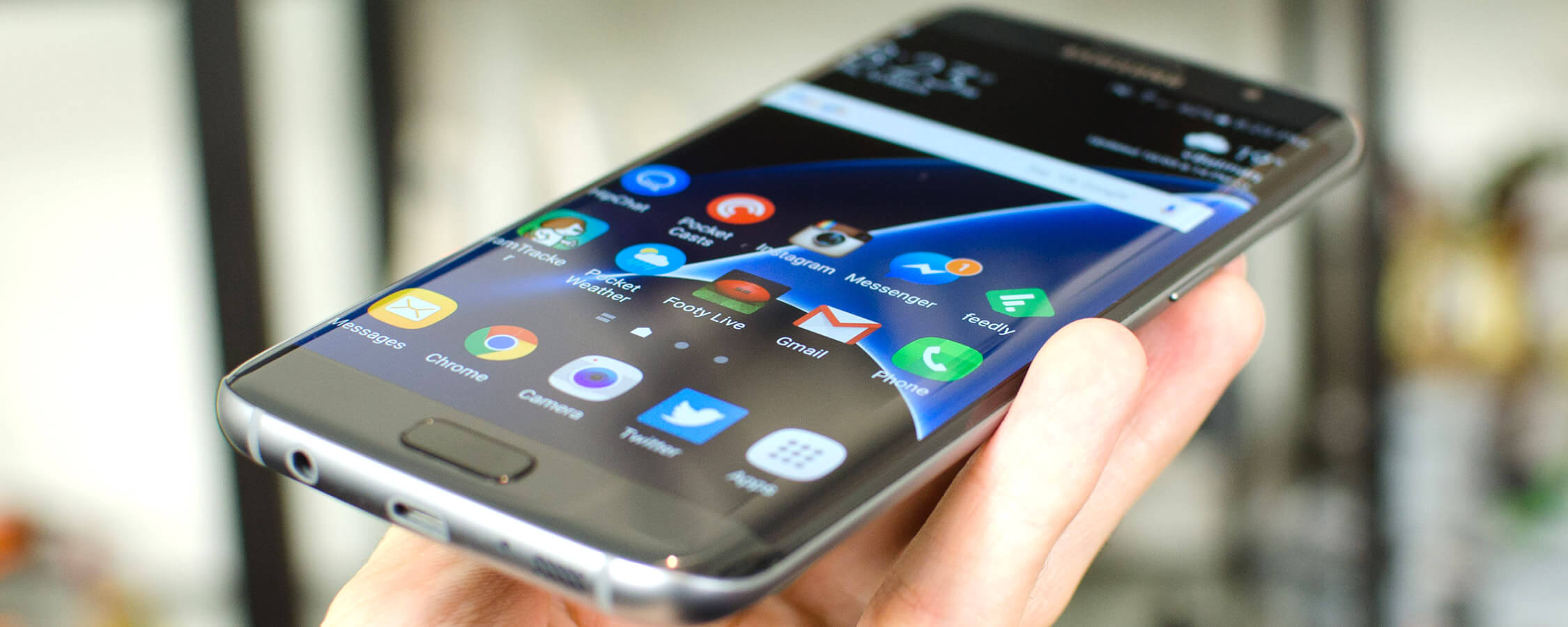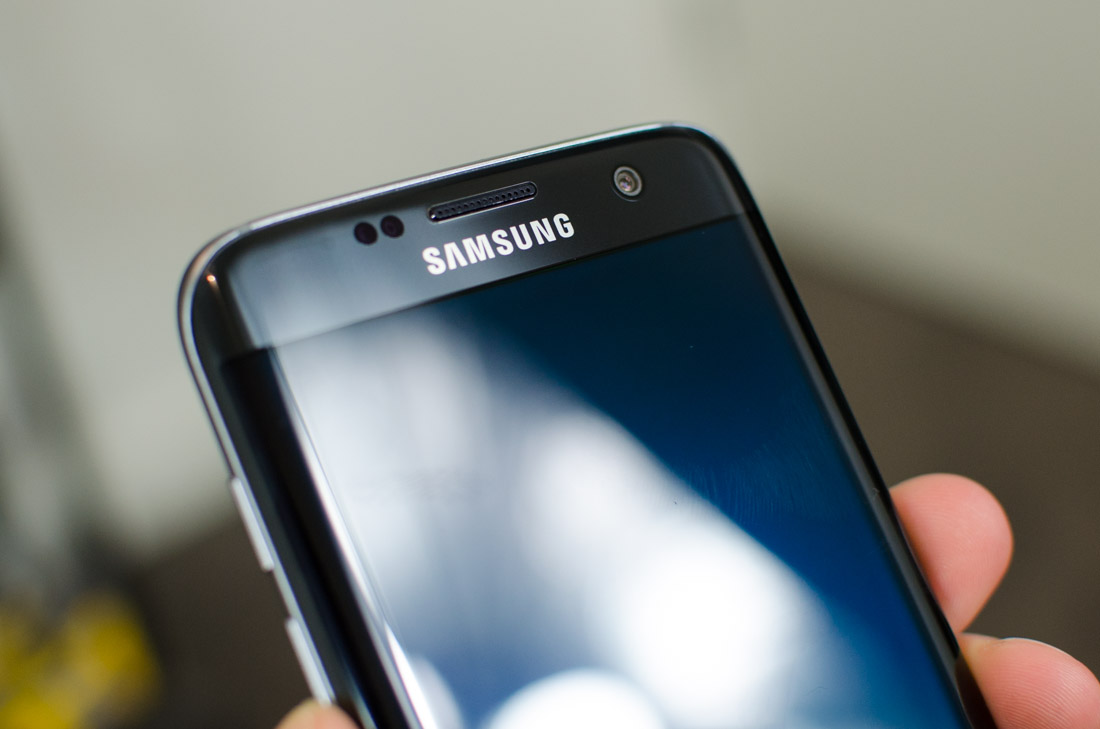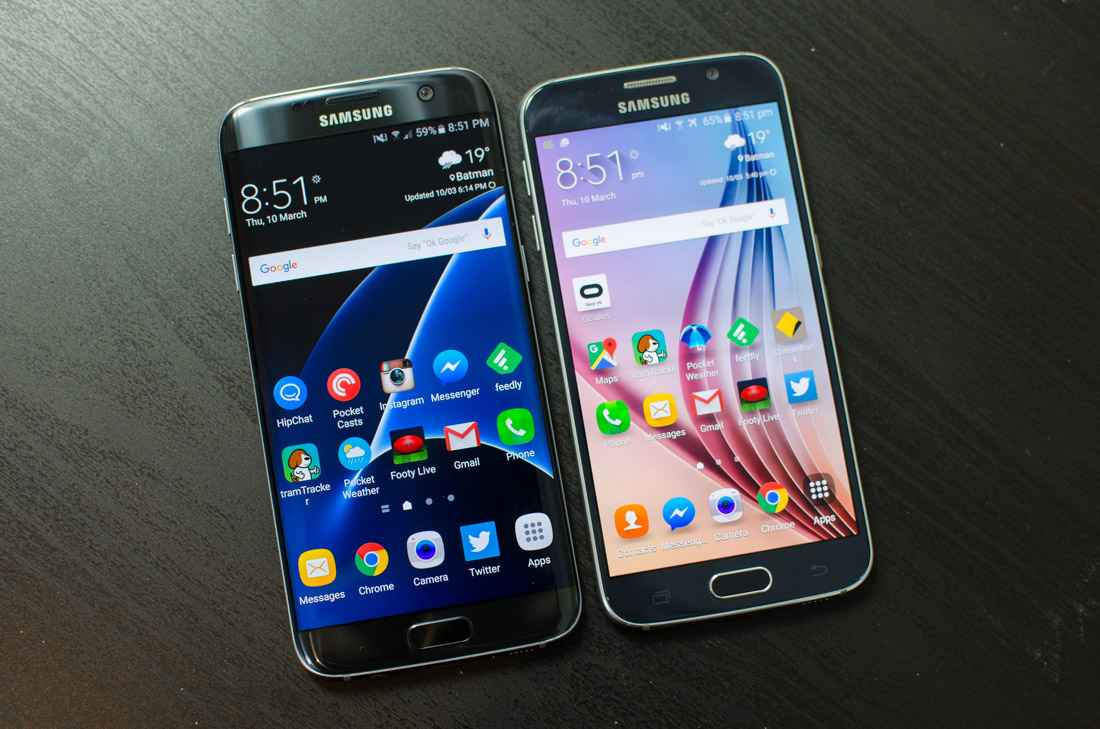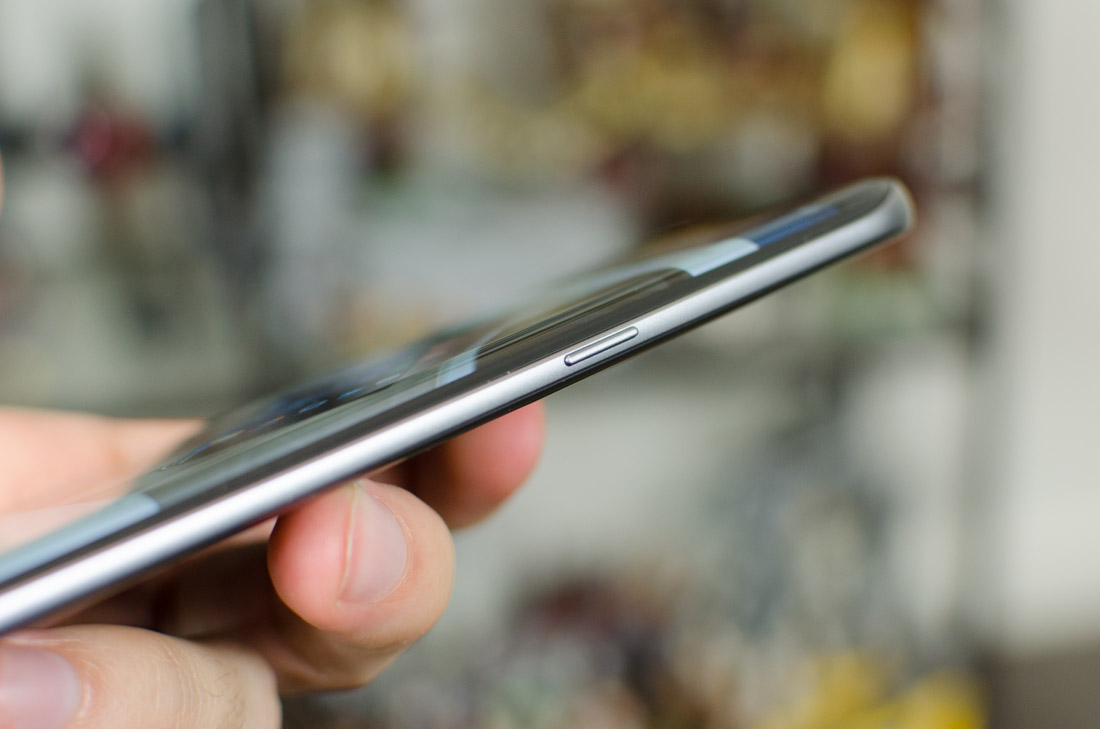Exynos 8890 Hardware Overview
There are two main versions of the Galaxy S7 Edge in the wild: a primary version with a Qualcomm Snapdragon 820 inside, and a secondary version with a Samsung Exynos 8 Octa 8890 SoC inside. I received the Exynos 8890 version of the Galaxy S7 Edge to review, so this performance section will mostly focus on Samsung's silicon, but I'll give a quick overview of the Snapdragon 820 as well.
For most markets, including the United States, the Galaxy S7 Edge will be sold with a Snapdragon 820 inside. This is Qualcomm's latest flagship SoC, packing four in-house-designed ARMv8 cores known as 'Kryo', split into two 2-core clusters. The more powerful of these clusters is clocked at 2.2 GHz for high-performance tasks, while less intensive tasks will be performed on the 1.6 GHz cluster.
The Snapdragon 820 is also equipped with an Adreno 530 GPU clocked at 624 MHz, as well as a new Hexagon 680 DSP and support for HEVC decoding at 4K 60 FPS. The chip is built using Samsung's 14nm FinFET process, and supports dual-channel LPDDR4 memory with 29.8 GB/s of bandwidth. The Snapdragon 820 also includes support for features like eMMC 5.1, LTE Cat 12/13, and Quick Charge 3.0.
The phone I have today for review, however, uses the new Exynos 8 Octa 8890 from Samsung. Also built using a 14nm process, the 8890 is essentially a direct competitor to the Snapdragon 820, with support for a similar selection of features including LTE Cat 12/13 and LPDDR4 memory (at 28.7 GB/s).
The main differing factor here is that Samsung has opted for an octa-core design rather than quad-core. It uses four in-house-designed Exynos M1 'Mongoose' CPU cores clocked up to 2.60 GHz, along with four ARM Cortex-A53 cores clocked up to 1.59 GHz, in a typical big.LITTLE configuration with Global Task Scheduling.
Samsung hasn't released a whole lot of information about Exynos M1, but it's based on ARM's large core designs like Cortex-A57 and A72. Samsung says we're looking at a 30% improvement in CPU performance over the Cortex-A57s included in the Exynos 7420 (seen in the Galaxy S6), along with 10% better power efficiency.
Rather than using an ARM design, the M1 cores are connected to the smaller A53 cores through the use of a Samsung Coherent Interconnect, which is a custom variation of a cache-coherent interconnect.
The Samsung Galaxy S7 Edge (left) next to a Galaxy S6
The GPU in the Exynos 8890 is an ARM Mali-T880 MP12, which is a 12-core variant of their newest and most powerful 4th-generation 'Midgard' line. With an increase in ALU pipelines and cores compared to the Mali-T760 in the Exynos 7420, we're looking at a decent significant graphics performance improvement over the Galaxy S6. In the Galaxy S7 Edge, the Mali-T880 is clocked at 650 MHz, which is a decrease in clock speed on the Exynos 7420.
Interestingly, Samsung has integrated a heatpipe cooling solution into the Galaxy S7 and S7 Edge to help better dissipate heat from the SoC. This tends to indicate that normally the Snapdragon 820 and Exynos 8890 would run quite hot, so a heatpipe is needed to mitigate heat issues. It could also mean we're looking at higher power consumption.
All Galaxy S7 and S7 Edge models come with 4 GB of RAM, and 32 GB of storage is the base level across the board. There is also a 64 GB model available, although as both phones come with microSD card slots, there won't be huge demand for models with higher internal storage. I tend to find 32 GB is fine for most smartphones, especially if you're streaming music.
As is usually the case, there are several versions of the Galaxy S7 Edge for different markets. The one I have on hand is the SM-G935F, which supports Category 9 LTE for speeds of 450 Mbps down and 50 Mbps up. The Exynos 8890 itself supports Category 12/13 LTE for 600 Mbps down and 150 Mbps up through what appears to be an integrated Shannon modem, though I suspect this has only been enabled for markets that actually have recent or impending Cat 12/13 rollouts.
Other connectivity features are exactly what you'd expect: Wi-Fi 802.11 a/b/g/n/ac with 2x2 MIMO support, Bluetooth 4.2 LE, ANT+, A-GPS+GLONASS, and NFC.



